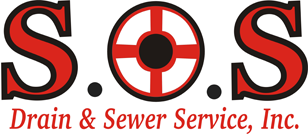Tree roots can have a significant impact on your sewer line, causing major plumbing issues and costly repairs. As trees grow, their roots naturally seek out sources of water and nutrients, and unfortunately, this often leads them to infiltrate sewer lines.
Once inside the pipe, the tree roots can create blockages, cracks or even collapse the line completely. This can result in sewage backups into your home or yard, foul odors and potential health hazards.
In this guide, we will discuss how tree roots can affect your sewer line and provide tips on how to address this issue. By understanding the signs of root infiltration and taking preventative measures, you can avoid expensive repairs and ensure the proper functioning of your sewer line.
What Is the Impact of Tree Roots on Sewer Lines?
Tree roots can have a significant impact on sewer lines in various ways. As mentioned earlier, roots can infiltrate and block the pipes, causing sewage backups and potential health hazards. Additionally, as the roots continue to grow and expand, they can also put pressure on the pipes, leading to cracks or even complete collapse.
Moreover, when tree roots penetrate sewer lines, they create small openings that allow other debris and materials to enter the pipe. This can further exacerbate blockages and damage over time. The cost of repairing these damages can be high and may require excavation of your yard or driveway.
It is essential to address root infiltration early on to avoid costly repairs and potential health hazards.
Signs of Tree Roots in Your Sewer Line
There are several signs that indicate tree roots may be causing issues in your sewer line. These include:
Slow Draining or Clogged Drains
Experiencing slow draining or clogged drains can be quite troublesome and inconvenient. This issue often arises from accumulated debris such as hair, soap scum, or grease, or foreign objects obstructing the pipes.
Over time, these materials build up, restricting water flow. Regular maintenance, such as routinely cleaning drain covers and using drain cleaners, can help alleviate these concerns and prevent complete blockages from occurring.
Gurgling Noises from Toilet or Drains
If you hear gurgling noises emanating from your toilet or drains, it could indicate a blockage or a venting issue within the plumbing system. This sound is caused by trapped air that creates a vacuum, which disrupts normal water flow.
Addressing these noises promptly is important, as they can escalate into more significant problems like backups or leaks, requiring immediate attention to prevent further complications.
Foul Odors from Drains or Yard
Unpleasant odors coming from drains or the yard are often signals of potential sewer line problems. These smells suggest a breach or crack in the sewer system, allowing gasses to escape. Such odors can stem from various issues, including pipe corrosion or tree root intrusion. It is essential to investigate and address them promptly to avoid health risks and ensure the integrity of your plumbing system.
Sewage Backups in Toilets, Showers, or Sinks
Sewage backups in toilets, showers, or sinks are serious plumbing emergencies that require urgent action. These incidents may be caused by severe blockages or structural damage in the sewer lines.
They can lead to property damage, unpleasant odors, and pose significant health hazards due to exposure to harmful bacteria. Immediate professional intervention is crucial to resolve the underlying cause, restore proper function, and prevent recurrence of these backups.
So these are some common signs that indicate potential tree root infiltration in your sewer line. If you notice any of these signs, it is essential to take immediate action and seek professional help.
Preventative Measures for Tree Root Infiltration
Taking preventative measures can help reduce the risk of tree roots causing damage to your sewer line. Some effective ways to prevent root infiltration include:
- Planting trees away from sewer lines: When planting trees on your property, make sure they are at least 10 feet away from any underground pipes. Plus, consider the size and growth patterns of the tree to avoid potential future issues.
- Regular sewer line inspections: Routine inspections of your sewer line can help detect any potential issues early on. This allows for timely intervention and preventative measures to be taken before significant damage occurs.
- Using chemical root killers: Chemical solutions specially designed to kill tree roots can be used as a preventative measure. These products are poured into drains and toilets to prevent roots from growing towards the pipes.
- Installing root barriers: Root barriers are physical barriers made of metal or plastic that can be placed along the length of underground pipes. They act as a deterrent for tree roots, preventing them from reaching your sewer lines.
By implementing these preventative measures, you can reduce the likelihood of tree roots infiltrating your sewer line and causing costly damages.
Why A Professional Should Handle Tree Root Infiltration
Handling tree root infiltration in your sewer lines is a task best left to professionals. Their expertise ensures accurate diagnosis of root-related issues and their impact on your plumbing system.
Professionals have access to specialized tools like sewer cameras, which allow them to assess the extent of infiltration without invasive procedures.
This technology aids in pinpointing problems precisely, preventing unnecessary damage to your property. Moreover, professionals possess the skills needed to implement effective solutions, whether it involves removing roots or repairing damaged pipes.
Attempting a DIY approach may lead to incomplete removal of roots, recurring problems, or even further damage to the sewer line. Hiring an experienced drain cleaner not only safeguards against improper handling but also provides peace of mind that your plumbing system will remain functional and free from troublesome root intrusions.
Choose S.O.S Drain & Sewer Services For Your Sewer Line Cleaning Needs
When it comes to sewer line cleaning services, you want a company that has the experience, expertise, and commitment to get the job done right. S.O.S Drain & Sewer Services has been serving Minneapolis and St. Paul since 1941 with trusted and efficient services.
We understand the frustration of dealing with clogged drains and sewer lines, especially for commercial businesses where smooth operations are crucial. That’s why we offer preventive maintenance programs to help our clients save on operating costs in the long run.
Our team of highly trained technicians uses state-of-the-art equipment and techniques to thoroughly clean your drain and sewer lines, removing any debris or obstructions causing blockages. We also provide video documentation, line locating and optic inspection to accurately identify the source of the problem.
If you’re experiencing clogged grease traps, we have specialized equipment and techniques to remove buildup and keep your kitchen running smoothly. So choose S.O.S Drain & Sewer Services for all your drain and sewer line cleaning needs, because we are committed to providing high-quality services at an affordable price.
FAQs
How can tree roots grow into sewer pipes and cause blockages?
Tree roots grow naturally towards moisture, often infiltrating sewer pipes through small cracks or joints. Once inside, they expand and cause blockages in the main sewer line, disrupting the flow and leading to potential backups.
What are the best ways to prevent tree roots from damaging your main sewer line?
To prevent tree roots from infiltrating your main sewer line, regular maintenance and inspections are key. Using root barriers and scheduling periodic sewer line inspections can help identify and address potential issues before they become severe.
How does a professional drain cleaner remove tree roots from a sewer pipe?
A professional drain cleaner can remove tree roots using specialized equipment such as augers, hydro jetting, or chemical root killers. These methods effectively clear the roots from the sewer pipe while minimizing damage to the existing plumbing system.
Why should you have your sewer line inspected regularly for tree root damage?
Regular sewer line inspections help detect tree root damage early, preventing costly repairs and ensuring your drain line functions efficiently. Plumbing services can assess the condition of your pipes and recommend necessary actions to maintain a clear and functional sewer system.








